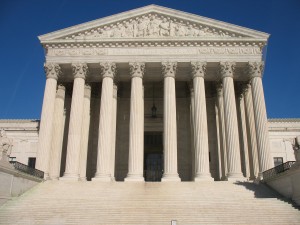Cerebral Palsy Lawsuit Alleges Hypoxic-Ischemic Brain Injury
 A medical malpractice lawsuit filed against the United States of America argues that gross negligence on the part of health care practitioners led to the minor plaintiff’s hypoxic-ischemic brain injury and cerebral palsy diagnosis. The plaintiffs are demanding compensatory damages to account for medical, nursing and attendant care, assistance with daily living and rehabilitative expenses until the child reaches the age of 18.
A medical malpractice lawsuit filed against the United States of America argues that gross negligence on the part of health care practitioners led to the minor plaintiff’s hypoxic-ischemic brain injury and cerebral palsy diagnosis. The plaintiffs are demanding compensatory damages to account for medical, nursing and attendant care, assistance with daily living and rehabilitative expenses until the child reaches the age of 18.
Reparations are also being sought for special adaptive living expenses such as housing, transportation and therapeutic devices that the minor plaintiff will need due to her permanent and debilitating brain damage. According to the complaint, the minor plaintiff was born at a U.S. naval hospital in Okinawa, Japan in 2008.
Cerebral palsy lawsuit allegations
In their cerebral palsy lawsuit, the parents are suing based on allegations that medical professionals at the naval hospital deviated from proper standards of care.
The claimants contend that the defendant doctors and nurses:
- Ignored signs of distress caused by a post-surgical bowel obstruction
- Delayed surgery until after the baby’s abdomen was so distended that breathing became labored without ventilator assistance
- Failed to maintain and protect the baby’s airway as she was moved to the operating table
- Perforated the infant’s esophagus in their many attempts to reintubate the child
- Failed to properly resuscitate their baby, causing her to suffer an anoxic brain injury
The medical malpractice claim states that the child suffered severe damage to her “deep central gray matter, which is consistent with hypoxic-ischemic brain injury” – confirmed by brain imaging tests and irregular EEG studies. Further tests revealed that the baby, who had suffered prolonged oxygen deprivation at the time of her bowel obstruction surgery, also had injury to other organs including her liver and kidneys.
Catastrophic brain injury caused by oxygen loss
Now diagnosed with cerebral palsy, the child struggles with a number of permanent disabilities including delayed cognitive abilities, impaired motor function, and cortical blindness. In all probability, for the remainder of her life she will require costly assistive devices, occupational and physical therapies, adaptive housing and special education, in addition to in-home nursing care. The complaint is also seeking compensation for the child’s future loss of earning capacity and loss of consortium with her parents as well as physical pain and mental anguish.
Like others who have suffered the effects of alleged medical malpractice, the plaintiffs have turned to the courts to help secure a more stable future for their child and ensure she receives the care needed for the remainder of her life.
Studies show the lifetime costs associated with raising a child with cerebral palsy can easily exceed $1 million – a colossal burden on most parents of average means. According to the CDC, disruption of oxygen supply during birth (hypoxia) is blamed for roughly 10 percent of all cerebral palsy cases.
Besides litigation, parents of children with CP may turn to other resources for financial and emotional support. Charity organizations, non-profit orgs and government programs often provide assistance to families in need, helping to improve the child’s welfare.
- National Institute of Neurological Disorders and Stroke, Cerebral Palsy: Hope through Research, http://www.ninds.nih.gov/disorders/cerebral_palsy/detail_cerebral_palsy.htm
- Cerebralpalsy.org, Cost of Cerebral Palsy, http://cerebralpalsy.org/about-cerebral-palsy/costs/


 Resources
Resources
 Resources
Resources
